Introduction
10BASE-T1S is a type of Ethernet communication method using a single twisted pair cable standardized by IEEE 802.3cg-2019.
In addition to 10BASE-T1S, IEEE 802.3cg-2019 also standardizes 10BASE-T1L, but this article introduces the features and scope of application of 10BASE-T1S, which is defined as a short-distance communication standard.
Features of 10BASE-T1S
Table 1 summarizes the main PHY specifications for 10BASE-T1S and other Ethernet communications.
The feature of 10BASE-T1S is that it supports"multi-drop connection"and "PLCA".
|
|
10BASE-T1S (Link Segment) |
10BASE-T1S (Mixing Segment) |
10BASE-T1L |
10BASE-T |
100BASE-TX |
1000BASE-T |
|
IEEE standard |
802.3cg-2019 |
802.3cg-2019 |
802.3cg-2019 |
802.3i-1990 |
802.3u-1995 |
802.3ab-1999 |
|
Maximum data transfer rate |
10Mb/s |
10Mb/s |
10Mb/s |
10Mb/s |
100Mb/s |
1Gb/s |
|
Connection method |
1 to 1 |
multi drop |
1 to 1 |
1 to 1 |
1 to 1 |
1 to 1 |
|
Communication method |
Full-duplex communication or half-duplex communication |
half-duplex communication |
Full-duplex communication |
Full-duplex communication or half-duplex communication |
Full-duplex communication or half-duplex communication |
Full-duplex communication or half-duplex communication |
|
Coding |
DME |
DME |
PAM3 |
manchester code |
MLT-3 |
PAM5 |
|
PLCA (Physical Layer Collision Avoidance) |
× |
〇 |
× |
× |
× |
× |
|
wire power supply |
PoDL |
× |
PoDL |
PoE |
PoE |
PoE |
|
Communication distance |
15m |
25m (8 nodes) |
1km |
100m |
100m |
100m |
Table 1: Key PHY specifications for 10BASE-T1S and other Ethernet communications
What is a multidrop connection?
Conventional Ethernet communication was a one-to-one point-to-point connection (Fig. 1). 10BASE-T1S supports Link Segment, which is a point-to-point connection, and Mixing Segment, which is a multi-drop connection (Fig. 2) that allows multiple devices to be connected on a pair of signal bus lines. As shown in Table 1, PoDL is not specified in IEEE802.3cg-2019 for Mixing Segment.
10BASE-T1S at least supports connection of up to 8 nodes and transmission distance of 25m.
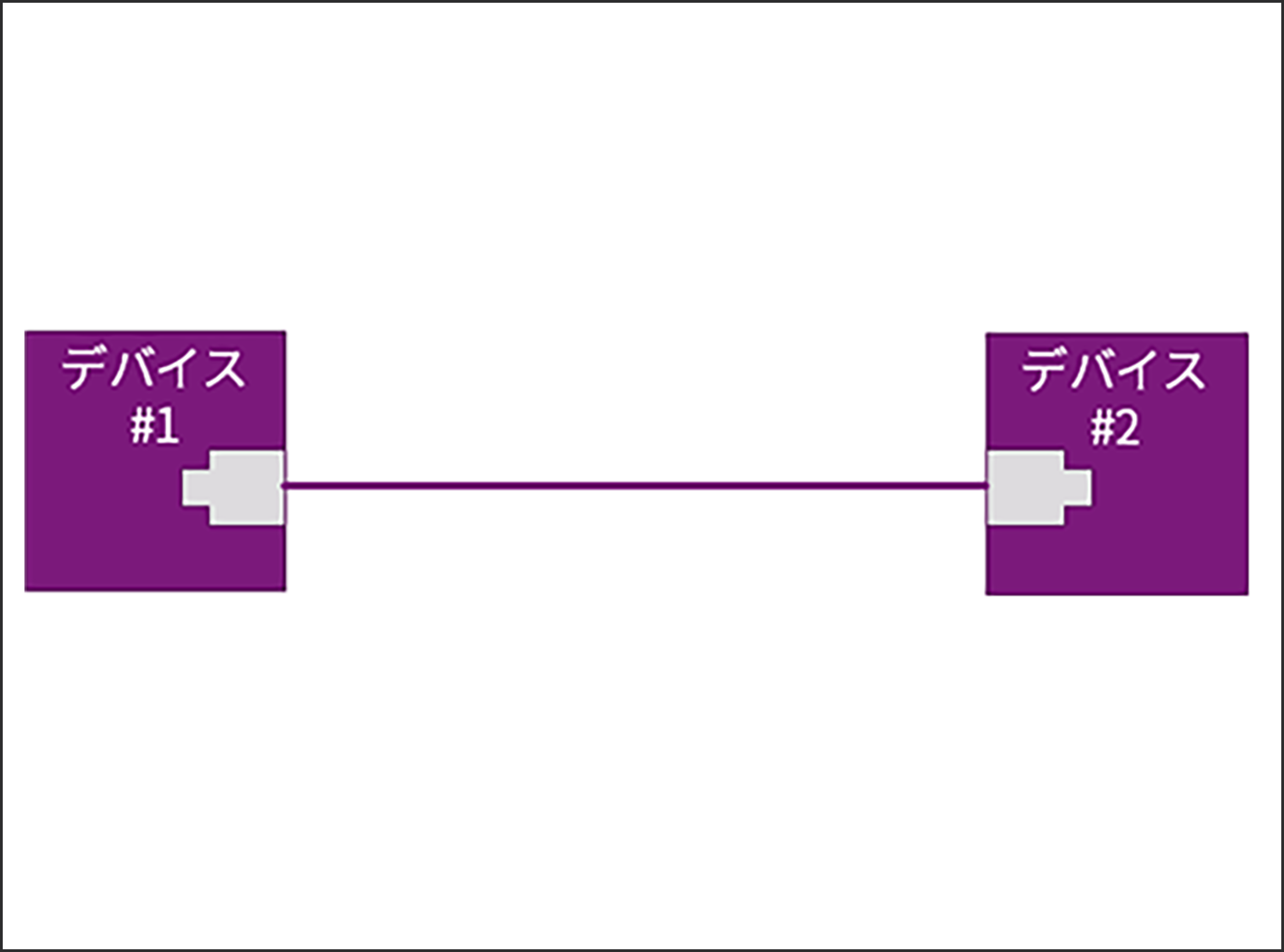
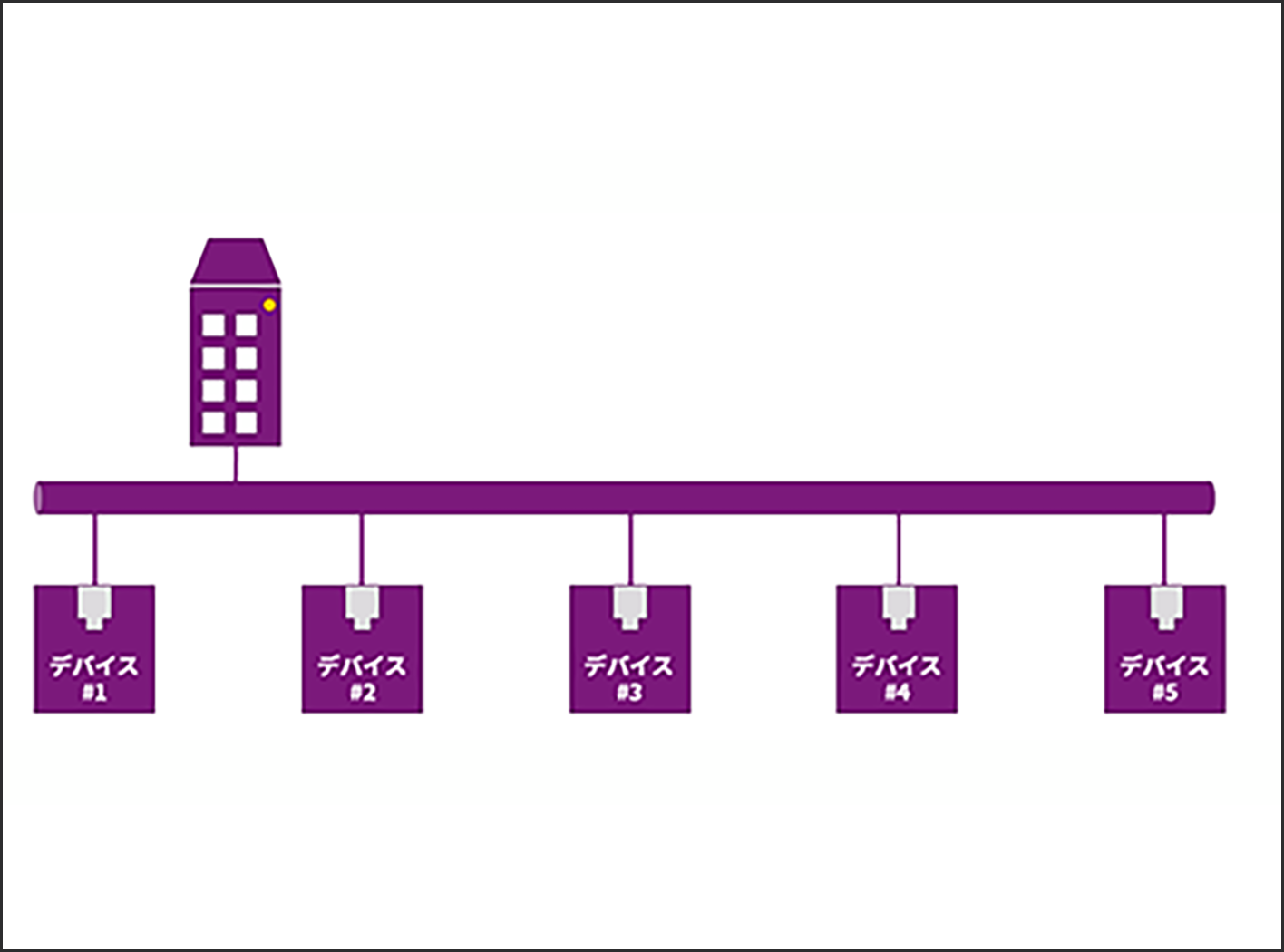
PLCA (Physical Layer Collision Avoidance)
PLCA RS was added as a sublayer in IEEE802.3cg-2019. This PLCA RS is specified to work with a 10BASE-T1S PHY operating in half-duplex multidrop mode. Also, the PLCA can be dynamically enabled or disabled by the management interface.
The PLCA function sets a unique node ID for each device connected by the management device and grants PHY transmission opportunities on mixed segments in order based on that ID.
PHY transmission opportunities are determined in a round-robin fashion. A node with ID=0 outputs a BEACON signal on the bus. This BEACON signal signals the start of a cycle of new transmission opportunities, and other devices wait for their own transmission opportunities by receiving the BEACON signal. Even if a node with ID=0 fails, the network still operates at the same performance level as a traditional CSMA/CD network without PLCA.
A COMMIT signal can be sent during the transmit opportunity before the PHY sends a packet, and a COMMIT request can stop the timer (TO_TIMER) of the other node and signal it to wait for the packet.
By determining transmission opportunities in this way, line collisions are prevented from occurring on the same bus.

Application range of 10BASE-T1S
Industrial networks are configured using 100BASE-TX, 1000BASE-T or faster Ethernet communication at higher layers, while field devices such as actuators and sensors use HART, RS-232, RS-485 and CAN. , FlexRay and various other communication interfaces.
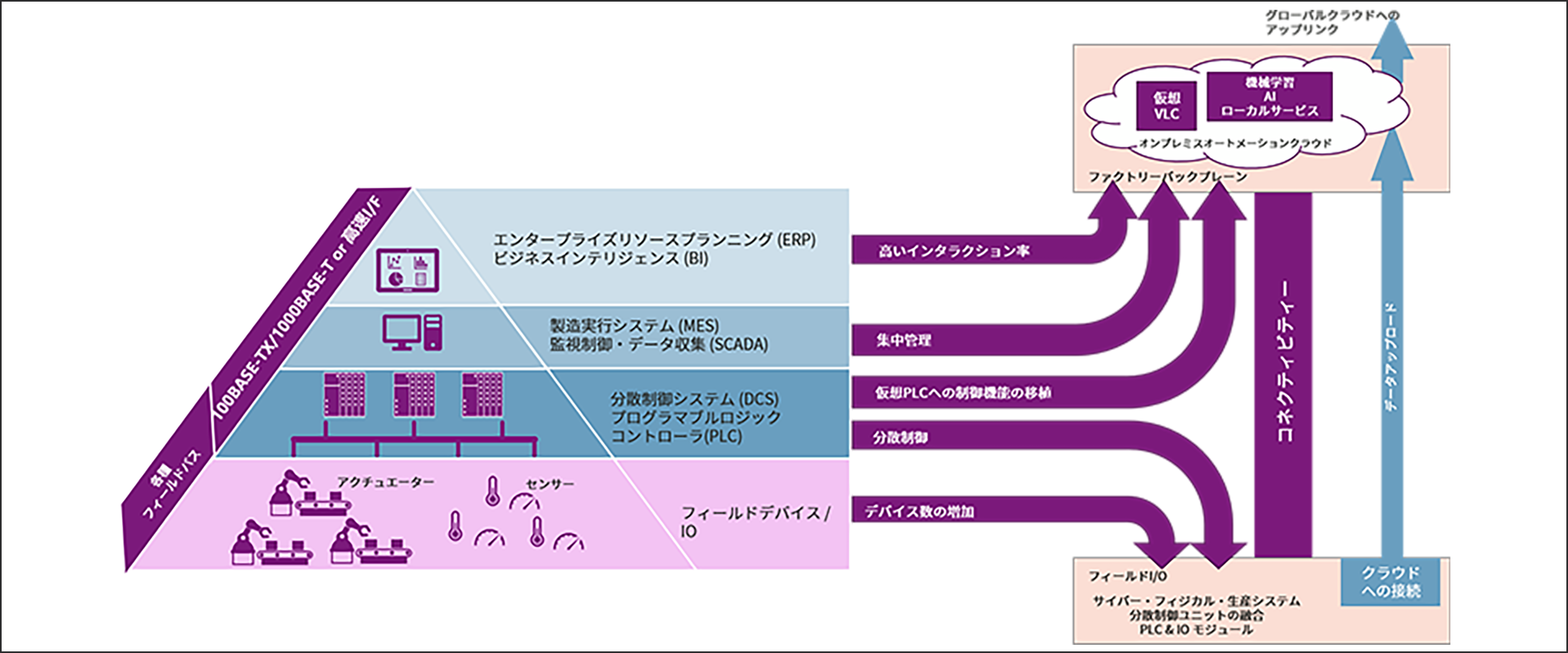
10BASE-T1S is a standard for the physical layer (PHY layer) in the OSI reference model, and conventional Ethernet can be used for layers above MAC. This eliminates the need for protocol conversion and enables seamless communication from field devices to the factory backplane.
The advantages expected when 10BASE-T1S is applied to industrial networks are introduced below.
When applied to in-cabinet wiring
- Industrial cabinets use large amounts of wires and typically operate at low bandwidths.
- 10BASE-T1S Ethernet increases bandwidth while dramatically reducing the number and amount of wiring.
- The simple wiring method of 10BASE-T1S can greatly reduce the time and cost required for wiring installation.
When applied to backplane
- The multi-drop of 10BASE-T1S Ethernet greatly simplifies the backplane layout and power distribution.
- 10BASE-T1S maintains high data rate and low latency.
When applied to field sensors
- 10BASE-T1S Ethernet is ideal for handling small networks of sensors (such as smart streetlights).
- 10BASE-T1S can manage both data communication and power over the data line.
When applied to intra-system communication
- 10BASE-T1S Ethernet can replace most of the I2C, SPI, and other proprietary onboard buses found on PCBs (such as server motherboards).
- Significantly reduces software and maintenance effort.
Implementation of 10BASE-T1S
Each IC supplier releases a driver for 10BASE-T1S.
The released 10BASE-T1S drivers include PHY single products and PHY + MAC integrated products.
When implementing 10BASE-T1S using a single PHY product, use it in combination with a CPU that supports Ethernet MAC functions. In this case, 18 signal lines are required to communicate between the 10BASE-T1S driver and the CPU using MII (Media Independent Interface).
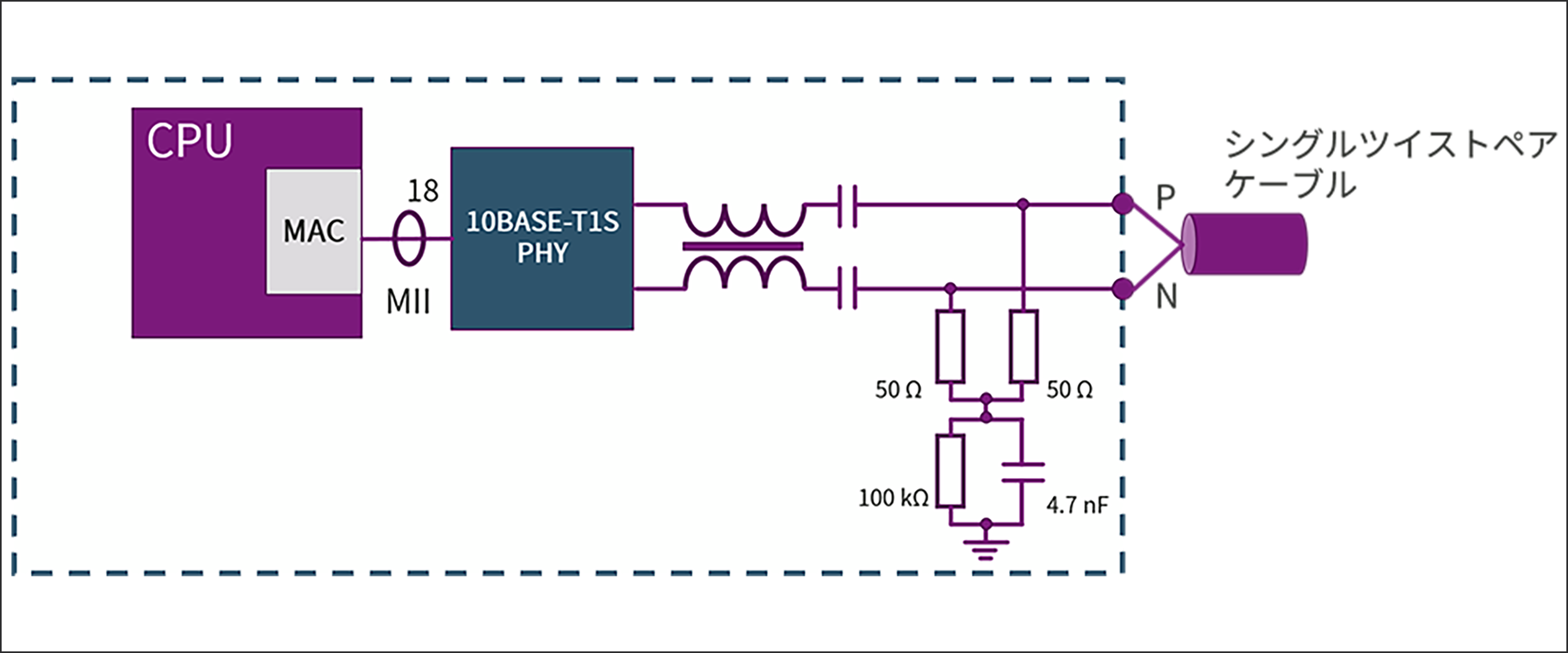
When implementing 10BASE-T1S using a PHY+MAC integrated product, it is possible to communicate with the CPU/MCU via SPI communication. In this case, the CPU/MCU side does not need to support the Ethernet MAC function, and communication between the 10BASE-T1S driver and the CPU/MCU can be connected with 5 signal lines.
Onsemi's 10BASE-T1S controller NCN26010 is a controller product that integrates PHY and MAC.
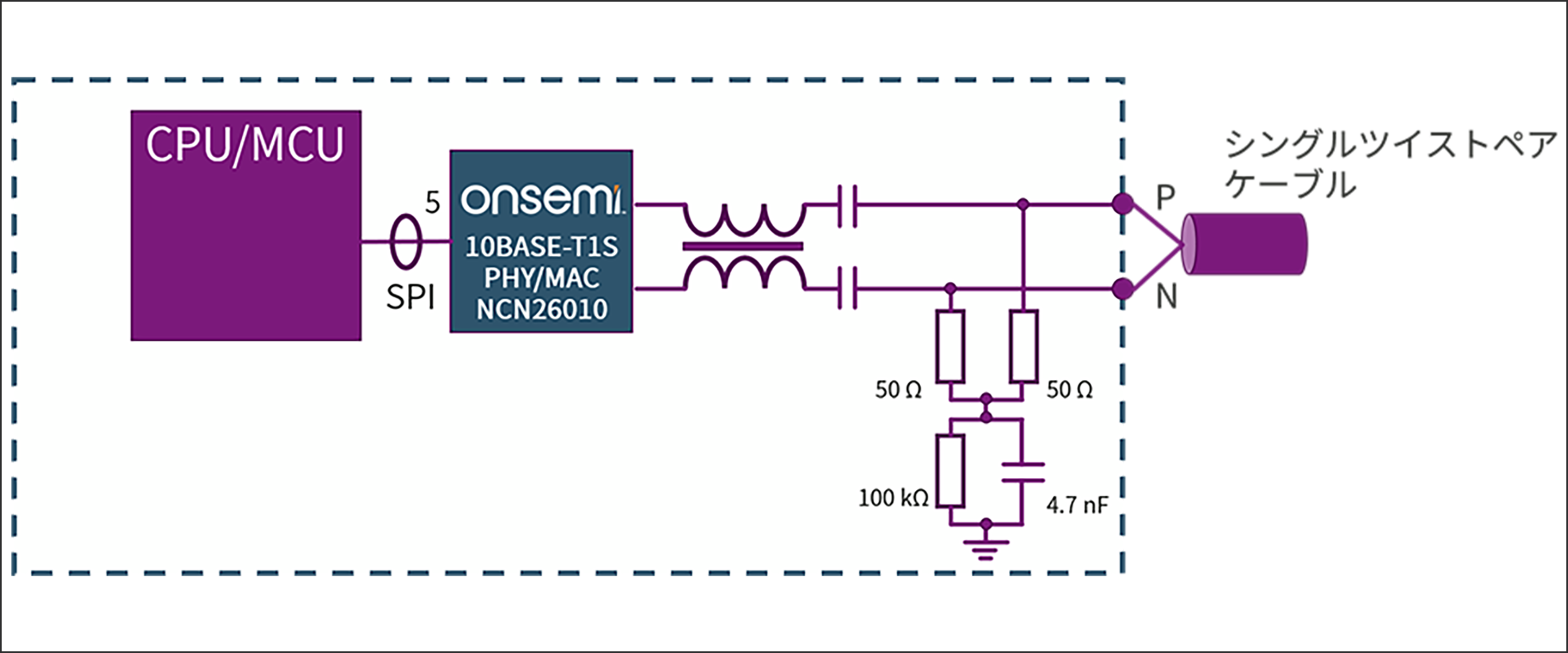
Summary
In factory automation, seamless connection between field devices and core systems is important, and 10BASE-T1S, which can utilize widely spread Ethernet technology, is one of the interfaces that are attracting attention.
ONSEMI's 10BASE-T1S controller has enhanced noise immunity by enabling Enhanced Noise Immunity Mode and has been proven to connect 40 nodes in a 25m single-pair Ethernet network.
For the product overview and features of the NCN26010, please refer to the product introduction at the link below.
Inquiry
If you are considering introducing 10BASE-T1S to your application field network, or are interested, please contact us.
Onsemi Manufacturer information Top
If you want to go back to ONSEMI Manufacturer Information Top, please click below.
